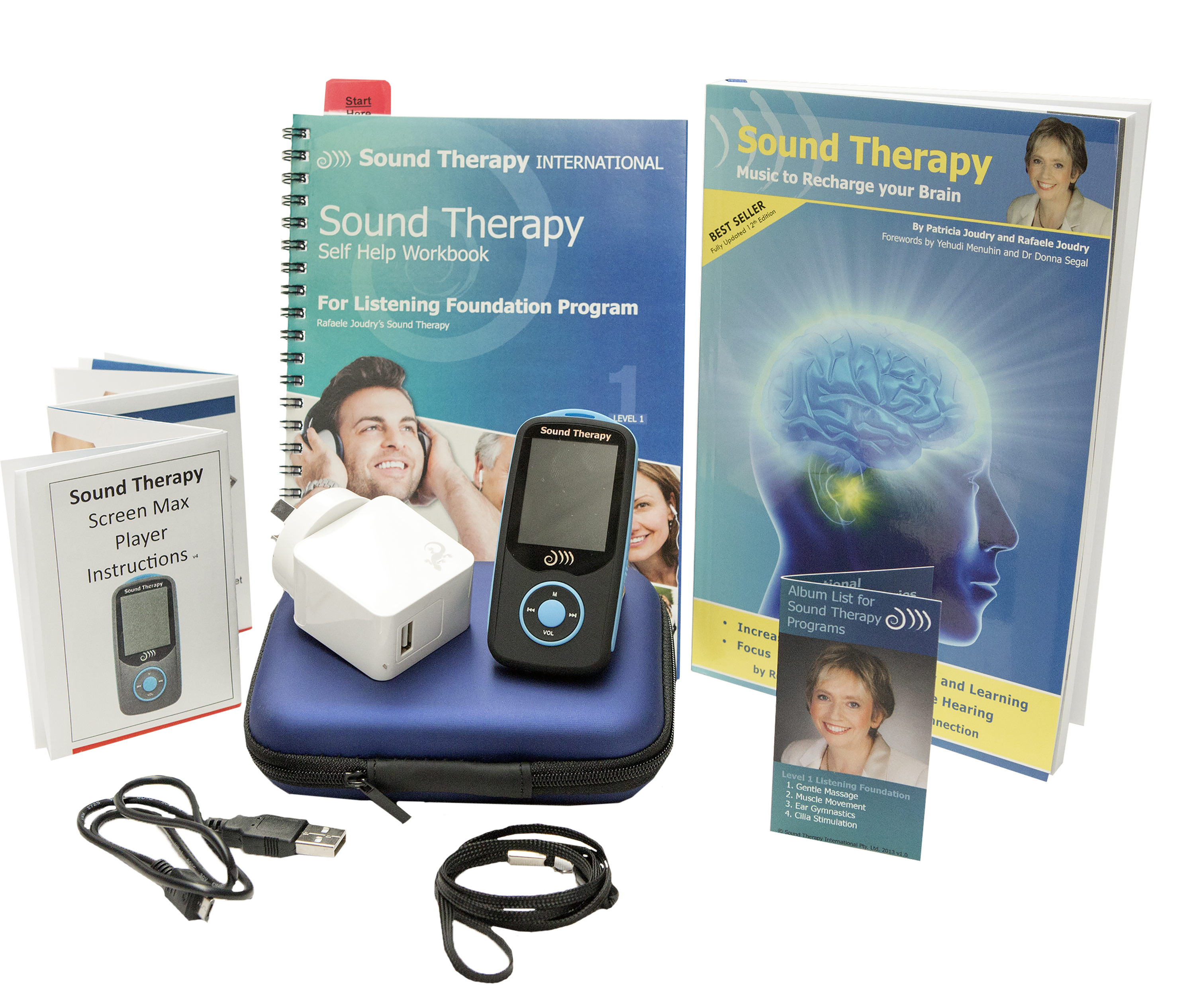White Paper
The science behind Sound Therapy’s impact on tinnitus
Science has found that tinnitus occurs in the brain. (Jastreboff 1993). Although tinnitus now affects up to 60 % of the population, (Australian Hearing, 2008) tinnitus patients are still routinely told that no treatment is available and they must learn to live with the condition. It is not uncommon for a tinnitus sufferer to seek advice from up to 20 clinicians in attempting to find a cure. (Jastreboff 1993).
New research on the neurophysiology of tinnitus and the plasticity of the cortex, indicates that tinnitus can be relieved by remapping auditory pathways in the brain. Evidence now suggests that:
• Tinnitus begins with auditory system injury
• Tinnitus occurs in the brain
• Some tinnitus related ear injuries can be repaired by sound
• Auditory remapping is possible
• Auditory remapping can reduce tinnitus
• Ear muscle function is related to vertigo
Auditory system injury
The most common cause of tinnitus is noise damage. Continuous exposure to noise above 85dB is known to cause permanent hearing damage (Fausti 1995.) This type of damage is likely to affect the cilia (the hair like receptor cells in the inner ear) and has a flow on effect on the nerve pathways and cortical centres they supply. Tinnitus can also result from head injury, infections, tumours, viruses and stress.
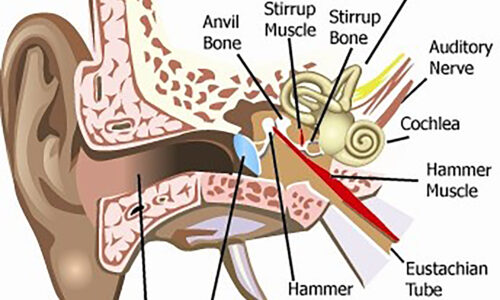
In effect, any damage or injury to the anatomy and hysiology of the auditory pathways can result in tinnitus. However, the noise itself, or the factor generating the experience of noise, occurs within the brain, as evidenced by incidents where the auditory nerve is severed but the noise continues.
Therefore it is the brain’s interpretation of sound that has to be altered to relieve tinnitus.
Sound improves ear function
The ear has several functions: hearing, balance and spatial orientation, and pressure sensation. In addition, it is linked to ten of the twelve cranial nerves, indicating its impact, through sensory integration, with many aspects of our nervous system. It follows then, that enhancing ear performance affects the way we process sensory information and can have an impact on tinnitus.
Cranial nerves and the ear
The ear is part of the nervous system. When we change processing of information in the brain, this causes an alteration of messages sent by the motor (efferent) nerves so there is an impact on functionality of various parts of the body. It also follows that when we alter the way we process sound in the brain, the ear functions differently.
The ear and brain form a feedback system which can be gradually re-educated through sound. Sensory nerves stimulate and re-map the brain, resulting in improved auditory processing and sound perception. The brain, in turn, sends signals back to the ear to improve its function. These motor signals (originating in a part of the brain stem called the Superior Olivary Nucleus) are part of a continuous feedback loop. Richards says:
“The efferent nerves run close to, but not within, the same tracts, as the afferent nerves. The Superior Olivary Complex is the region of the brainstem where efferent neurons arise and have their point of origin, but are not within the afferent nuclei. It is this system that is responsible for the auditory reflex activities of the stapedius and the tensor tympanic muscles.”
This motor activity generates the tone of these muscles, continually monitoring the tension being applied to the ear drum and providing protection to the hair cells from excessive levels of stimuli.
| The Twelve Cranial Nerves – Links to the Ear | ||
| No. | Nerve | Links to Ears |
| 1 | Olfactory | |
| 2 | Optic | Auditory Nerve |
| 3 | Occulomotor | Auditory Nerve |
| 4 | Trochlear | Auditory Nerve |
| 5 | Trigeminal | Ear Drum |
| 6 | Abducent | Auditory Nerve |
| 7 | Facial | Ear Muscles |
| 8 | Auditory | Inner Ear |
| 9 | Glossopharyngeal | oval and round window of cochlea,Eustachian tube and ear drum |
| 10 | Vagus | ear drum, pinna |
| 11 | Spinal accessory | vagus |
| 12 | Hypoglossal | |
It also feeds information back to the hearing organ in the inner ear, causing a mechanical fine tuning effect on attention and sound localization. (Richards, 2003.)
Auditory Remapping
Recent discoveries in the field of neural plasticity have demonstrated the potential for brain pathways to be restructured and organised through sensory
stimulation. (Jenkins, 1990, Sasaki, 1980.)
Since we know that auditory remapping can occur, the question is what kind of stimulus can promote this remapping in such a way as to interrupt and calm the tinnitus signal.
The use of classical music integrates the proven beneficial effects of music therapy with he neural stimulus of sound therapy. (Jausovec 2003). Classical music, and in particular the compositions of Mozart, have been found to beneficially influence brain function. (Jausovec 2003) It is believed that the rich combination of complex melody, harmony and rhythm inherent in this music is a significant factor in the efficacy of auditory remapping to reduce
tinnitus.
Tsutomu et al (2000) conducted a study using psychological measurements of
brain responses in which they demonstrated that music containing high frequencies above the audible range had a significant effect on brain activity.
In a study using PET to map neural responses, Lockwood et al found that “simple tonal stimuli activate a large and complex network of neural elements,” (Lockwood 1999) and that higher frequencies were perceived at more central regions of the brain, as opposed to the surface areas, and that:
“contrary to predictions based on cochlear membrane mechanics, at each intensity, 4.0 kHz were more potent activators of the brain than the 0.5 kHz stimuli.”
By using classical music with a specific algorithm of augmented high frequencies Sound Therapy is believed to influence responses in the medial temporal lobe system and bring about adaptations of the central nervous system in order to induce appropriate integration with the limbic system, hich is the seat of the brain’s emotional responses (Goldstein 2005).
Ear muscle tone and vertigo
Though the role of the middle ear muscles has previously been minimized in hearing research, new evidence now suggests they may play a more active role than previously thought.
Dr. Tomatis writes on Meniere’s:
“To what then is Meniere’s vertigo due? I
believe I have the authority to declare, as a result of the frequent recoveries we have achieved, that we are dealing with an anomaly in the tension of the stirrup muscle. This muscle, which regulates the pressures of the fluid in the labyrinth, can, like every other muscle, and especially the facial muscles, be suddenly moved by independent, involuntary movements called “twitches.” Each of us has seen or felt one of his own muscles suddenly begin to dance about without his having made any voluntary movement to cause this. Such a twitch often happens on the face, and when one questions those suffering from Meniere’s vertigo, one often discovers its coexistence with a facial twitch. In fact, the distribution of the nerves in the facial muscles is similar to that which governs the stirrup muscle. Consequently, under the impetus of the stirrup plate, which drives itself into the labyrinth like a piston, the endolymphatic liquid is going to be stirred up into a storm, so bringing in its wake a cataclysmic depression. In order to stop such a tempest, everything is put in place to relax this muscle, which is altogether too active. Hence vertigo arises,
under the agitated movement of the endolymphatic liquid, and so do buzzings (perceived as bodily noises, following the non-regulation of inhibitory phenomena) and hearing loss, as a result of the reduced tonus of the stirrup muscle. Once vertigo sets in, the musculature no longer is able to easily ensure its normal functioning, and internal irritation triggers off discharge which in turn brings about hypertension. Through the use of the Electronic Ear and its electronic gating mechanisms, the hypertension of the stirrup muscle may be reduced, thereby allowing it to resume its proper balancing role. This is followed by diminution of the buzzing noises in the majority of cases and finally the restoration of hearing to some degree.”(Tomatis 1991.)
Tinnitus reduction through Sound Therapy
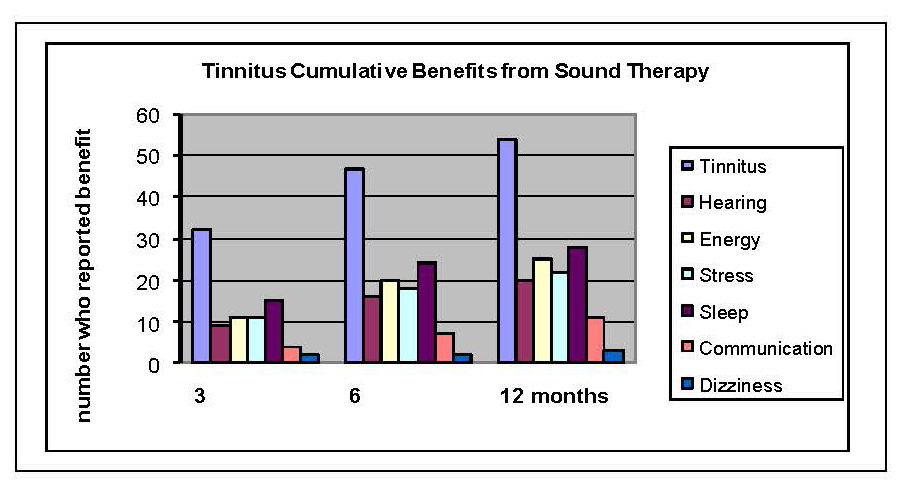
Some Sound Therapy listeners have experienced both improved hearing and reduced tinnitus, even when caused by noise induced trauma. While this is by no means a guaranteed result, it has been shown that improvement is possible, so the diagnosis that all tinnitus sufferers must simply learn to live with their condition no longer seems appropriate.
A survey of 139 tinnitus sufferers using portable Sound Therapy for tinnitus relief showed increasing benefits in reduction of tinnitus over a 12 month period. Of the qualified respondents 86% reported benefits from the Sound Therapy program.
Of those, 42% reported a reduction in the noise level of their tinnitus. The other 44% reported benefits in associated symptoms including reduced stress, increased energy, better sleep, and mentioned not being as bothered by their tinnitus due to the effect of masking and stress reduction. Most respondents reported improvements in three or more areas. (Joudry 2009.)
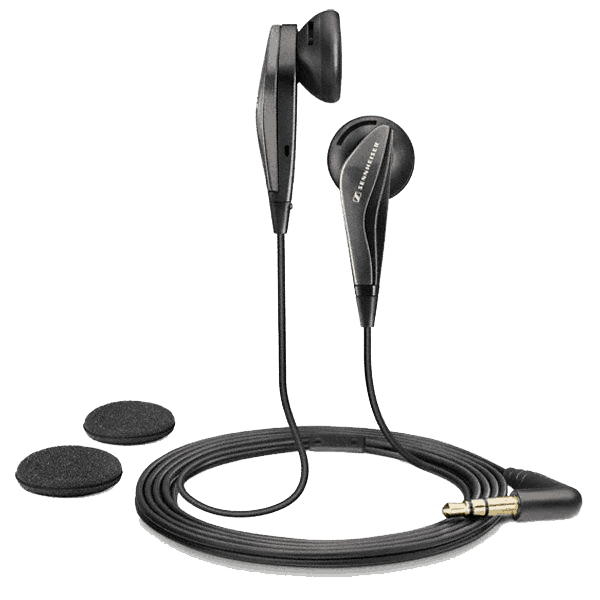
|
or |

|

|
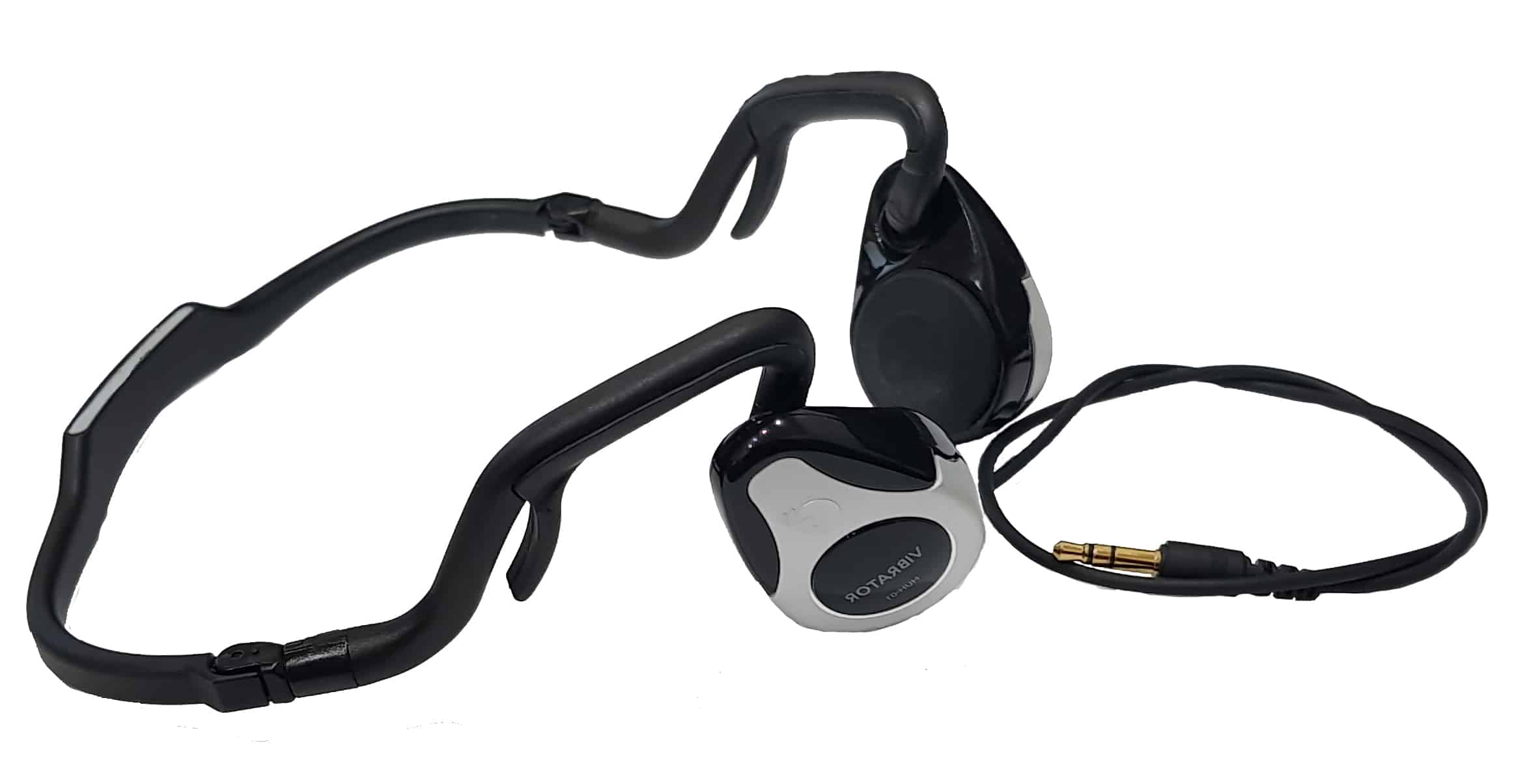
|

|

|

|
| An affordable option with everything you need to get started with Sound Therapy |
| Add the benefits of nutritional support and bone conducted sound to improve your results |
| Contains everything in the Triple Mode package plus our very best headphones and both Level One and Level Two programs. |
SAVE $284
SAVE $430
SAVE $667
REFERENCES
• Australian Hearing’s Health Report: Is Australia Listening? Attitudes to hearing loss. (2008). pg10-13.
• http://www.dangerousdecibels.org/hearinglos s.cfm
• Doidge, N. (2008). The Brain the Changes Itself. Scribe Publications, Carlton North, Vic.
• Goldstein, B. A., et al, 2005, “Tinnitus Improvement with Ultra-High-Frequency Vibration Therapy.” International Tinnitus Journal, Vol. 11, No. 1, 14–22
• Fausti, S., et al., (2005)., “Hearing Health and Care: The Need for Improved Hearing Loss Prevention and Hearing Conservation Practices.” Journal of Rehabilitation Research & Development, 42(4), 45-62.
• Goldstein, B. A. et al, (2005)., “Tinnitus Improvement with Ultra-High-Frequency Vibration Therapy.” International Tinnitus Journal, Vol. 11, No. 1, 14–22.
• Jastreboff, P.J., Hazel, W.P., (1993)., “A Neuro- physiological approach to Tinnitus: Clinical Implications,” British Journal of Audiology, 27, 7-17.
• Jausovec, N, and Habe, K., (2003). “The “Mozart Effect”: An Electroencephalographic Analysis Employing the Methods of Induced Event-Related Desynchronization/Synchronization and Event Related Coherence,” Brain Topography. 16(2):73-84, 24.
• Jenkins, W. M., et al, (1990)., “Functional reorganization of primary somatosensory cortex in adult owl monkeys after behaviorally controlled tactile stimulation,” J Neurophysiol 63: 82-104, 0022-3077/90.
• Joudry, P. and Joudry, R., (2009). Sound Therapy: Music to Recharge Your Brain, Sound Therapy International, NSW, Australia.
• Lockwood, A.H., et al, (1999). “The Functional Anatomy Of The Normal Human Auditory System: Responses To 0.5 And 4.0 Khz Tones At Varied Intensities.” Cerebral Cortex, 9, 65-76.
• Richards, G., (2004). “Auditory Neurology that May Support the Tomatis Theory and other Auditory Intervention Techniques.” Presented to Australian Audiological Society Conference Brisbane.
• Sasaki et al., (1980). Gerken et al, 1986: Salvi et al., 1992. Cited in Jastreboff, P.J.& Hazel, W.P. 1993, “A Neurophysiological approach to Tinnitus: Clinical Implications,” British Journal of Audiology, 27, 7-17.
• Tsutomu, O. et al, (2000)., “Inaudible High Frequency Sounds Affect Brain Activity: Hypersonic Effect,” J Neurophysiol 83:3548-3558.
• Weeks, Bradford S., (1989). “The Therapeutic Effect of High Frequency Audition and its Role in Sacred Music”;in About the Tomatis Method, eds. Gilmor, T M., et al. The Listening Centre Press, Toronto. Cited on http://weeksmd.com/?p=714

